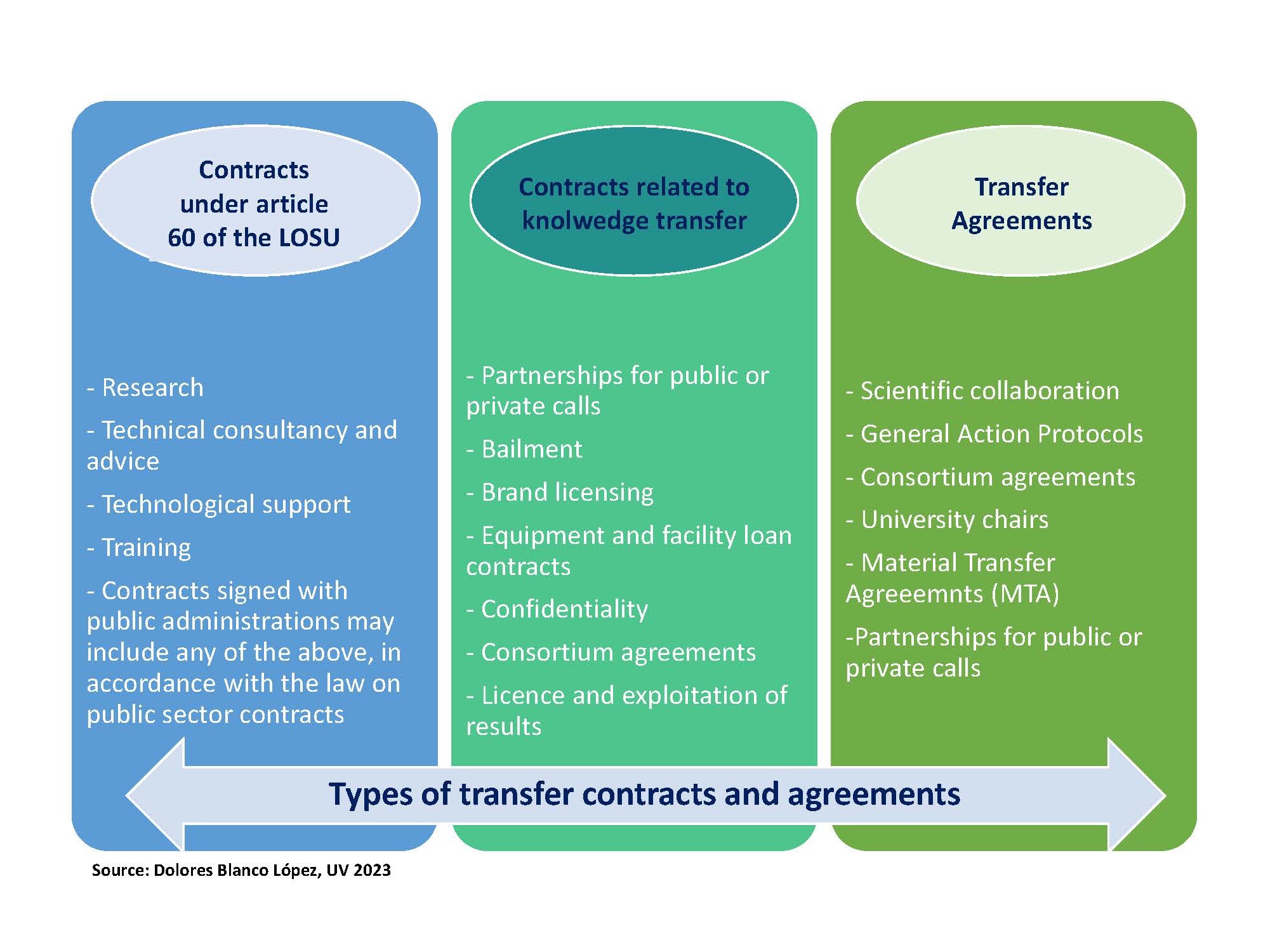What are they?
- They are contracts of a private and binding nature that establish the conditions under which a party (the disclosing party) discloses confidential information to another party (the receiving party). Typically, the information disclosed is valuable to the disclosing party, hence the interest in keeping it out of the public domain. They are usually signed on a reciprocal basis, i.e. the obligation of confidentiality binds both parties.
What are they for?
- They are used in order to minimise the risks of possible disclosure of information, where there is a need to provide access to confidential information, on the understanding that it will not be disclosed by either party and that it will be used solely and exclusively for the purpose agreed between the parties. Clear examples include: preliminary discussions on the possibility of undertaking an R+D project, the preparation of a cooperative project among several participants or the information that is exchanged prior to the signing of an operating licence.
Who signs them?
- As a general rule, the confidentiality agreement is signed by the PDI responsible for the projects or cooperative projects to be carried out (keeping in mind that the exchange of confidential information directly compromises this PDI) and by the vice-principal with delegated powers in innovation and transfer.
What must be included in the agreement:
- A clear definition of “confidential information” and what should be considered as such, a concise description of the purpose of the cooperation between the parties and the purpose of the exchange of confidential information.
- An indication of usage restrictions for the other party (to be used for...)
- A clear outline of the period of exchange of the information and of the “confidentiality obligation” once the exchange of information has ended, which may be indefinite (unadvisable) or for a limited period of time, but always covering the need for confidentiality in each case and also considering the reasons or situations for which the confidentiality agreement should be terminated.
- A list of the individuals that are to be subject to the confidentiality obligation and the third parties that, without being privy to the agreement, are linked to one of the parties; it is common to find contracts whose obligation of confidentiality extends to related companies, or subsidiaries.
- Exceptions of confidentiality and the point in which the information is no longer confidential - when, legally, the information in question has been made public, whether it is known by or originates from a third party.
- Established causes for non-compliance for disclosure of confidential information, among others, and the possibility of compensation.
- Defined duration of post-contractual confidentiality obligations after the expiry of the contract (e.g. return or deletion of information in any medium, etc.).
Additionally...
Although the confidentiality agreement can be unilateral or reciprocal, reciprocity is advisable, even if it is only one party that has valuable confidential information, making it clear in the agreement that the confidentiality concerns all signatory parties.
- The PDI responsible for the confidentiality agreement must ensure that the obligation applies to all staff sharing such information (laboratory staff, students, external collaborators, consultants, subcontractors), adopting the necessary technical and organisational measures.
- Most contracts and agreements include clauses on confidentiality and publication of results, however, signing an additional confidentiality agreement prior to the start of negotiations is recommended, as it is essential in the protection of the shared information, even in the event that an agreement for the development of a project is not reached.
- If, after the exchange of confidential information, the parties reach an agreement and sign a contract for the development of a project, when drafting the confidentiality clause of this second contractual document they will need to consider the previously signed confidentiality agreement and make specific mention of it in the terms of the new contract or agreement.
- The confidentiality agreements have a validity period for the time during which the information is exchanged, but obligations of confidentiality may extend beyond the validity period established in the agreement, as the non-disclosure of information is likely to continue (5, 10 years) after the end of the contract. These extended obligations of confidentiality must be specified.
- It is highly recommended to keep a written record (minutes, receipts, etc.) of the information being transferred and the dates, marking it as “confidential information.”
What are they?
- They are agreements of a private nature that regulate the transfer (delivery, reception or exchange) of different materials, such as laboratory or product samples, bacterial strains, proteins, chemicals, prototypes, data transfer or software, between the subscribing parties for the purpose of testing, evaluating or validating the received materials.
- The University can either be the recipient entity (which receives the material with which it will work) or the supplying entity (that lends the material).
What are they for?
- They have a variety of uses: the execution of research projects, assessing the possibility of signing a contract or agreement for the development of a project at a later stage, carrying out viability studies to determine whether the material is compatible with the receiving party’s installations, to test the material for future I+D collaborations or for the supply of samples or prototypes to future contracting parties, among others. These agreements are common before proceeding with the procurement of a licence to exploit research results.
- MTAs are often signed in order to secure the intellectual property rights and the confidentiality of the provider of the material against possible disclosure or appropriation by the recipient party.
Who signs them?
- They are signed by the vice-principal with delegated competencies in innovation and transfer and are accompanied by the signature of the PDI responsible and the recipient or supplier of the material.
What must be included in the agreement:
- Clear definition of the subject matter of the agreement and a description of the material to be transferred (preferably through annexes and in as much detail as possible), avoiding vagueness that could lead to future disputes.
- A “definitions clause”, so as not to give rise to misinterpretations.
- A clear and specific definition and possible limitations of the use of the transferred material by the recipient entity. The permitted use may be related to the development of a specific research project or the conduct of a study or evaluation. It must also include a list of the excluded or prohibited uses of the material (usually commercial use) by the recipient entity.
- A statement regarding whether the transfer is to be free of charge or whether it comes with a fee, as agreed upon by the parties involved.
- A detailed explanation of which entity will be in charge of the costs of transport, maintenance during transport and exportation (if any). Generally, this responsibility falls to the recipient entity.
- A strict confidentiality clause that details the confidentiality obligations, the responsibilities in case of non-compliance and regulations regarding the possible publication of the results.
- A specification of ownership regarding possible results or future rights that may come about as a result of the work carried out, whether or not the transferred material is subject to further improvements or research and access rights.
- A defined period of the agreement’s duration.
- A description of the obligation of the recipient entity to take the necessary measures if the transferred material is toxic or hazardous, as well as the assurance that the recipient entity will not hold the suppling entity responsible for any liability that may arise from the use of the transferred material.
Additionally...
- If the material covered by the agreement is protected by industrial or intellectual property rights, close attention must be paid to the conditions of confidentiality and non-disclosure.
- It is important to note that materials owned by the UV, specifically results that, in accordance with the Sustainable Economy Law and Law 14/2011, form part of the assets of universities and public research bodies, are governed by private law.
- With regard to ethical issues, the MTA prohibits any use of biological materials on human beings and must be subject to what is indicated in the corresponding ethics committees, the responsibility of biosafety and the regulations that, where applicable, must be complied with, for example, Law 14/2007 on Biomedical Research and its implementing regulations, if the material is of human origin.
What are they?
- Donations (in cash or in kind), defined as “the act of willingly offering something free of charge by one person/entity in favour of another, who accepts it”, are pure, simple and irrevocable and can be made by natural or legal persons, whether or not resident in Spain.
- In sponsorship, either an individual or a private actor makes contributions to the university with an altruistic and charitable nature for their own purposes or in the general interest, without requiring the delivery of any results. In exchange, the university agrees to disseminate, by any means, the participation of the collaborating entity in these activities.
- The donation or sponsorship does not entail any financial compensation in favour of the collaborating entity. Therefore, under no circumstances can these collaborations be considered as a provision of services.
What are they for?
- Donations may be made to the university in the form of monetary contributions or present assets (real estate, books, vehicles, rights, etc.) of the donor, or part of them, for the use of, in this case, by the university. - Donations can be of a general nature (the donation of a library, for the use and enjoyment of the university community) or of a more specific nature (a donation to collaborate in a specific R+D project).
- With sponsorship, the financial contributions are used for the development of a series of activities related to its corporate purpose.
Who signs them?
The principal or the vice-principals with delegated powers.
What must be included in the agreement:
- In many cases, donations are not regulated by agreements. A letter from the donor and a donation certificate issued by the university is sufficient, however, this does not impede, in any way, the possibility of including the mention of the donor’s collaboration in any dissemination activities or materials. Other times, donation agreements are signed in a simple format.
- Typically sponsorship is regulated by business collaboration agreements.
- In both cases, the following should be kept in mind:
- The type of contribution of the entity should be indicated - in cash or in kind.
- The purpose of the donation must also be indicated, expressly mentioning the projects or actions for which the contribution is to be used.
In the case of sponsorship, the business collaboration agreement should reflect that the university is committed to the dissemination, by any means, of the participation of the sponsoring entity in the activities performed.
Additionally...
- Not to be confused with a Sponsorship Agreement, in which the entity providing the financial support expects to receive some type of benefit, usually in the form of advertising; in this case, a service contract is required.
- Donations and sponsorship are regulated under Law 49/2002 of 23 December, of the tax regime for non profit entities and tax incentives for patronage. It is also one of the regulations on which the chairs of the Universitat de València are based.
- A private entity as well as an individual person making a contributions (in cash or in kind) to a beneficiary as a sponsorship or donation, may obtain tax incentives for the corresponding personal income tax or corporate income tax.
- These transactions are NOT SUBJECT TO VAT. A donation certificate can be issued as proof of donation.
What are they?
- Consortium Agreements are contracts or agreements made between different entities (the “partners of the consortium”) in order to outline the present rights and obligations during a temporary partnership for the purpose of jointly carrying out a specific project.
What are they for?
- These agreements reduce the possibility of posterior disputes by detailing the rights and obligations of all parties with regard to a joint project, as well as the access rights and/or exploitation rights to be granted to the parties regarding possible results of the project.
- They are typically used for R+D+I activities and were initially designed for use in collaborative R+D programmes called for by public administrations or private entities. They are also used for European projects (Consortium Agreement), national or international public tender, and for sponsorship agreements or even own funding between the parties.
Who signs them?
- The consortium agreements are signed by the principal or the vice-principals with delegated powers in R+D+I matters.
What must be included in the agreement:
These are very complex agreements that need to be negotiated by staff with experience in the field. Some of the issues to be discussed are:
- Definition of the subject matter (the project to be developed) and the period of execution.
- Background knowledge that each partner possesses and that will be necessary for the development of the project. The access rights to this prior knowledge during the project’s development must be indicated and in addition, if applicable, the conditions for using such knowledge in case of further exploitation of the results obtained.
- Management regulations of the consortium: the organisation, coordination, mechanisms for decision-making, joining or abandonment of the partners, budget changes, etc..
- Duration and period of validity. If the agreements are conditional on the approval of economic aid, the agreement will be conditional on the granting of aid (if previously signed), as is the start date of the agreement.
- With regard to the obtained results: the indication of ownership property; entity in charge of the management of property titles and deeds in the case of co-ownership of the results; access rights during the development of the project and regulation for posterior exploitation of the results.
- Establishment of regulations related to confidentiality and publication.
- Clauses related to the regulatory conditions regarding the development of the project: commitments and obligations of the parties, the distribution of tasks and funding and the entity acting as interlocutor vis-à-vis the granting administration, in the case of agreements subject to the granting of a subsidy.
Additionally...
- These are complex agreements given that a parallel negotiation must be conducted with many partners with (at times) conflicting interests. Regarding the submission of projects to public calls for research grants, it is necessary to bear in mind the regulatory basis and the call itself, as well as its complexity, both in terms of processing and justification.
- Agreements regarding projects to be submitted to public calls can be signed voluntarily (the UV requests them) or as required by the call for research grants. In the latter case, the signatures may be required prior to the awarding of the grant or once the aid has been granted, adjusting their terms to the characteristics and conditions of the funding.
- In the latter agreements, the parties, as indicated in Law 38/2003 of 17 November on General Subsidies, must seriously consider the responsibilities assumed by each party, either on their own or jointly and severally, both financial and technical. It is thus established that each beneficiary party will be responsible for the fulfilment of the undertaken activities and will also be liable for any reimbursement obligations or penalties that may be imposed as a result of non-compliance with its commitments. In the event that a party fails to meet these obligations, each member of said party shall be jointly and severally liable.
- In these agreements, it is crucial to consider issues relating to intellectual and industrial property, both in terms of prior knowledge provided and the results obtained. In general terms:
- It can be agreed upon that access rights to prior knowledge and to the results obtained, can be granted for the exclusive use of project development. If the prior knowledge is required for the exploitation of the results and, provided that they are in a position to transfer them, a non-exclusive licence with some sort of compensation is recommended.
- Regarding the generated results of the project, they are the property of the person who generates them. If they are obtained by several participants and cannot be divided, they will be deemed as co-property that will be regulated via a co-ownership agreement. In this event, the UV shall offer the results to whoever wishes to exploit them, through licences, always providing advance notice to the other parties.
What are they?
- They are agreements in common law that can be defined as a loan by one entity (bailor) to another (the bailee) of an asset during a determined period of time for the use and enjoyment of said asset. When the end of this period is reached, the asset is to be returned to its owner.
- The UV is allowed to sign bailments with other public entities or with private entities.
What are they for?
- Equipment, non-expendable goods, furniture, buildings, etc. can be loaned, free of charge, for the general purpose of R+D project development or activities or viability testing.
Who signs them?
- The principal or the vice-principals with delegated powers in innovation and transfer or in research, when speaking strictly of bailments related to R+D+I.
What must be included in the agreement:
With the intention of avoiding future conflicts, the bailment contracts require some specific clauses:
- Detailed description and definition of the loaned asset and its use, as well as the limits of use.
- Exact start and end dates for the loan period of the asset.
- Delivery date of the asset and when it may start being used.
- Costs that the loaned asset may incur. During the period of bailment, it must be stipulated who is responsible for the costs related to maintenance, taxes, services, etc. of the loaned asset.
- It should be clearly specified that the agreement is free of charge, not for a fee.
- Similarly, it should be clearly indicated to whom the asset belongs (the bailor) and that ownership is not transferred to the bailee by virtue this agreement, as the bailee will only have right of use.
- An appraised value of the loaned asset, stating the parties’ agreement on the amount.
- The parties must agree to the working condition of the asset at the time of signing the agreement. It is additionally advisable to provide a document of reception of the asset at the time of delivery and at the time of return, certifying its good condition.
- The obligations and responsibility that each party will undertake during the bailment period must be clearly defined. The civil code clearly defines these responsibilities:
- Obligations of the bailee
- Correct use of the asset according to the terms and conditions laid out in the agreement.
- Handle the costs associated with the asset’s use and conservation.
- Assume responsibility for the deterioration or loss of the asset, if it has been used for a purpose other than those agreed upon or if it is kept for a period longer than the one established in the agreement, even if this is due to an unforeseeable circumstances or by fortuitous event.
- Assume liability for damage caused by the asset to third parties.
- Return the asset at the end of the bailment period.
- All the bailees to whom something is jointly lent shall be held jointly and severally liable.
- Obligations of the bailor
- Provide the loaned asset.
- Collect the asset only after the activity or use for which it was lent has concluded. If urgent use of the asset is necessary, its return can be requested only.
- Reclaim the asset if the contract failed to stipulated the use or the bailment period.
- Pay the extraordinary expenses arising from its use, as well as the mandatory insurances, taxes, contributions and charges levied on the asset lent, unless otherwise agreed.
- Notify hidden defects of the asset (if any). Otherwise, the bailor shall be liable for all damages resulting from such a cause.
- Define the grounds for termination of the contract.
Additionally...
- These are mere tenancy agreements, that is, the bailee cannot claim ownership for the asset used during a certain period of time because the bailor retains legal ownership of the asset lent. Purchase of the asset at a later date is also not an option.
- The bailor must have possession of the property title of asset, being the owner, leaser or usufructuary.
- The object of the bailment agreement must be non-fungible.
- These are free-of-charge agreements (the bailor does not receive any financial compensation). The asset is loaned so that it may be used for a determined period of time and then returned. - If there is any payment on behalf of the party using the asset, the agreement ceases to be a bailment, and if it takes the form of a loan with interest payments, and then would be legally considered a loan or a lease.
- Unless expressly authorised, the bailee cannot assign the right of use of the asset to a third party. If this possibility exists, the right is extinguished when the right of the bailor is ended.
- The bailee is not liable for the deterioration resulting from use alone and for which is no liability.
- The purpose of these contracts is to allow businesses and institutions outside the UV to make use of the spaces, installations and equipment of the university in order to carry out certain activities during an established period of time.
- They typically arise due to unforeseen needs in the development of a contract or collaborative project. Clauses on the use of space and equipment are also incorporated in consortium agreements or in joint and associated units, where, the joint participation of UV staff with the other entity within the same facilities of the UV is necessary.
- In this event, the spaces and the equipment will be shared and, depending on the project, some form of remuneration may be requested.
- Along with space, the permanance of people from the other entity must be regulated.
What are they?
- These are contracts of a private nature in which the sponsored party (typically the university) agrees to collaborate in the advertising of the sponsor (the sponsoring entity) in exchange for financial support in order to carry out sporting, charitable, scientific, cultural or other types of activities.
What are they for?
- The objective is that the sponsoring entity collaborates in the realisation of an activity or performance organised by the sponsored party (the university). The university, in exchange, agrees to collaborate in the advertising efforts of the sponsor during the execution or realisation of the activity or performance that is detailed in the contract.
- This is a service contract, whereby the university provides advertising services to the company that provides financial support for the activity for which it is to be sponsored.
Who signs them?
- The vice-principals responsible for the signature of agreements and under whose management the sponsored activity will fall.
What must be included in the agreement:
- Explanation of the activity that is to be sponsored (conferences, congresses, meetings, activities, etc.). In the annex, it is recommended to expand on this information, detailing the dates, location, etc..
- Define the period of the contract and possible contract extensions. It can be done for one-time activities or for something more long-term.
- Indication of the fiscal amount, with VAT separate, and the form of payment.
- The compensation to be received by the sponsoring entity for their financial support (inclusion of the brand image in certain material, installation of adverting materials, stationery, assignment of advertising space, communication, etc.).
- Responsibilities of the sponsoring entity, non-compliance and penalisations, if necessary.
Additionally...
- Sponsorship contracts are regulated by Law 34/1988 of 11 November 1988 on General Advertising, as amended by Law 29/2009 of 30 December 2009, which amends the legal regime on unfair competition and on advertising to improve consumer and user protection, so that this type of contract shall be governed by the rules of the advertising broadcasting contract insofar as they are applicable.
- This is not disinterested financial support. This is a provision of advertising services, in which the financial support must be billed with the corresponding VAT.
- This type of contract is not to be confused with agreements of sponsorship or donations, disinterested contributions for the exercise of activities that are of their own or of general interest, which do not require a direct compensation or results from the sponsored party, and where the latter can publicise the collaboration of the sponsoring entity in the activities carried out, relating the image of the entity with social values.














